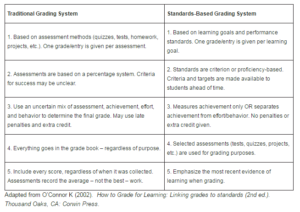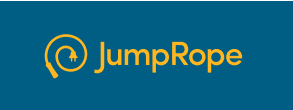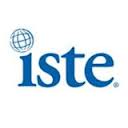 How many times have you experienced teachers who based report card grades on how well students complete classwork, homework, and quizzes? They mistakenly conflate these exemplars with learning. For example, a book report may require a certain number of written (or typed) pages or paragraphs rather than evidence that the student drew conclusions and summarized knowledge.
How many times have you experienced teachers who based report card grades on how well students complete classwork, homework, and quizzes? They mistakenly conflate these exemplars with learning. For example, a book report may require a certain number of written (or typed) pages or paragraphs rather than evidence that the student drew conclusions and summarized knowledge.
That’s changing. Today, many educators want to not only evaluate progress at a point in time but optimize that against the ongoing standards their school mission is built on such as Common Core, International Baccalaureate, NGSE, or TEKS.
What is Standards-based Grading
To accomplish this, many schools and Districts have turned to Standards-based Grading. According to Tomlinson and McTighe, standards-based grading (SBG) “measures student proficiency on well-defined course objectives.” This means students have clear guidelines for how to define success over time, making it easy for all stakeholders in a student’s learning to determine if they are accomplishing what must be done for college and career. It de-emphasizes subjectivity by providing an objective delineation of requirements.
SBG reminds teachers that the goal isn’t to write the book report but communicate ideas. Matt Townsley clarifies this with a chart he’s adapted from Ken O’Connor’s How to Grade for Learning:
When grading is based on well-defined and widely-communicated standards that are familiar to all stakeholders, opportunities present themselves to differentiate for student needs, such as the child whose writing is challenging but s/he succinctly addresses standards such as “…support claims in an analysis of substantive topics or texts using valid reasoning and relevant and sufficient evidence” and “Produce clear and coherent writing in which the development, organization, and style are appropriate to task, purpose, and audience” in audio or video format.
Three resources
The most prevalent problem most teachers cite about standards-based grading is that it is time-consuming. Teachers must itemize tasks, attach them to relevant standards, monitor student progress toward achieving the standards, and remediate when necessary. If your school is making the change to standards-based grading, here are three resources that can help:
Free
Kiddom is a free standards-based platform designed to help teachers curate individual learning experiences (see my review here). Its pages are visual and easy-to-understand, enabling teachers to quickly determine how students are doing and where remediation is needed — all without spending a lot of time analyzing data. Many of the pieces are linked, allowing you to dig deeper on any subject from a variety of pages rather than one specific spot.
Here are details you’ll like:
- All relevant teacher information is included on the teacher dashboard with links to dig deeper into standards, students, assessments, assignments, and more.
- Teachers create assessments aligned with pre-selected standards. As students complete them, the teacher is provided analytics that track progress in meeting standards, allowing teachers to remediate areas of weakness.
- Assignments can be exit tickets, homework, a midterm, a paper, a presentation, a quiz, or a test. They can be generated from content providers like Khan Academy, Common Lit, CK-12, and IXL, or created by the teacher (by uploading documents from their local drive or Google Drive).
- Teachers can add comments to completed assignments.
- Teachers can differentiate for student needs by pushing out assignments to the entire class, a small group, or an individual.
- Report cards can be automatically created based on student work.
Click for a free Standards-based Grading Guide.
Free
Created by a well-known name in the tech-in-ed field, Standards Planner is a straight-forward online lesson planner. Each document includes a title, description, Standards (that are dragged into the lesson plan from a drop-down list), a text box for narrative, and as many resources as required. Each step (i.e., creating a schedule, adding resources, planning lessons, and more) is supported by an interactive how-to tour and/or video to walk you through how to do it. Once the lesson is built, it’s simple to drag it onto your weekly schedule and share with interested stakeholders (grade-level team, substitute teachers, admin, and even parents).
Standards Planner loads quickly with a clean interface and no advertising or distractions from the fundamental job of creating Standards-aligned lesson plans.
Free/Fee
JumpRope is an LMS with a foundational standards-based gradebook. Class assignments are aligned with one or more standards that can be specific to the teacher (such as “transferred knowledge from the history unit”), national or state standards, or higher-order thinking goals (such as Habits of Mind). Grades show which standards were met and to what degree, making it easy for students to see how they are progressing toward long-term goals. This gradebook can be integrated into existing LMSs such as PowerSchool. Because education is a family project, student families can view progress toward meeting standards, download assignments, and access missing work online.
Click for the free “Implementing Standards-based Grading at your School or District“.
***
Overall, SBG is the right decision for student learning but not without a commitment by teachers. Redesigning a class around standards rather than projects forces teachers to think through exactly what they’re teaching and why. When that’s done, the result, unavoidably, is that students win.
Jacqui Murray has been teaching K-18 technology for 30 years. She is the editor/author of over a hundred tech ed resources including a K-12 technology curriculum, K-8 keyboard curriculum, K-8 Digital Citizenship curriculum. She is an adjunct professor in tech ed, Master Teacher, webmaster for four blogs, an Amazon Vine Voice, CSTA presentation reviewer, freelance journalist on tech ed topics, contributor to NEA Today, and author of the tech thrillers, To Hunt a Sub and Twenty-four Days. You can find her resources at Structured Learning.







































Thanks for sharing this informative breakdown of Standards Based Grading. There is definitely a noticeable shift as more schools move to Standards Based Grading, indeed the IB has worked on this system for years. It provides more reasoning behind grading which is more useful for students and teachers and helps provide context for development and positive improvement. softegg.co.uk
I like its guideline approach. I have to believe students do better knowing the goal so intellectually, I like SBG.